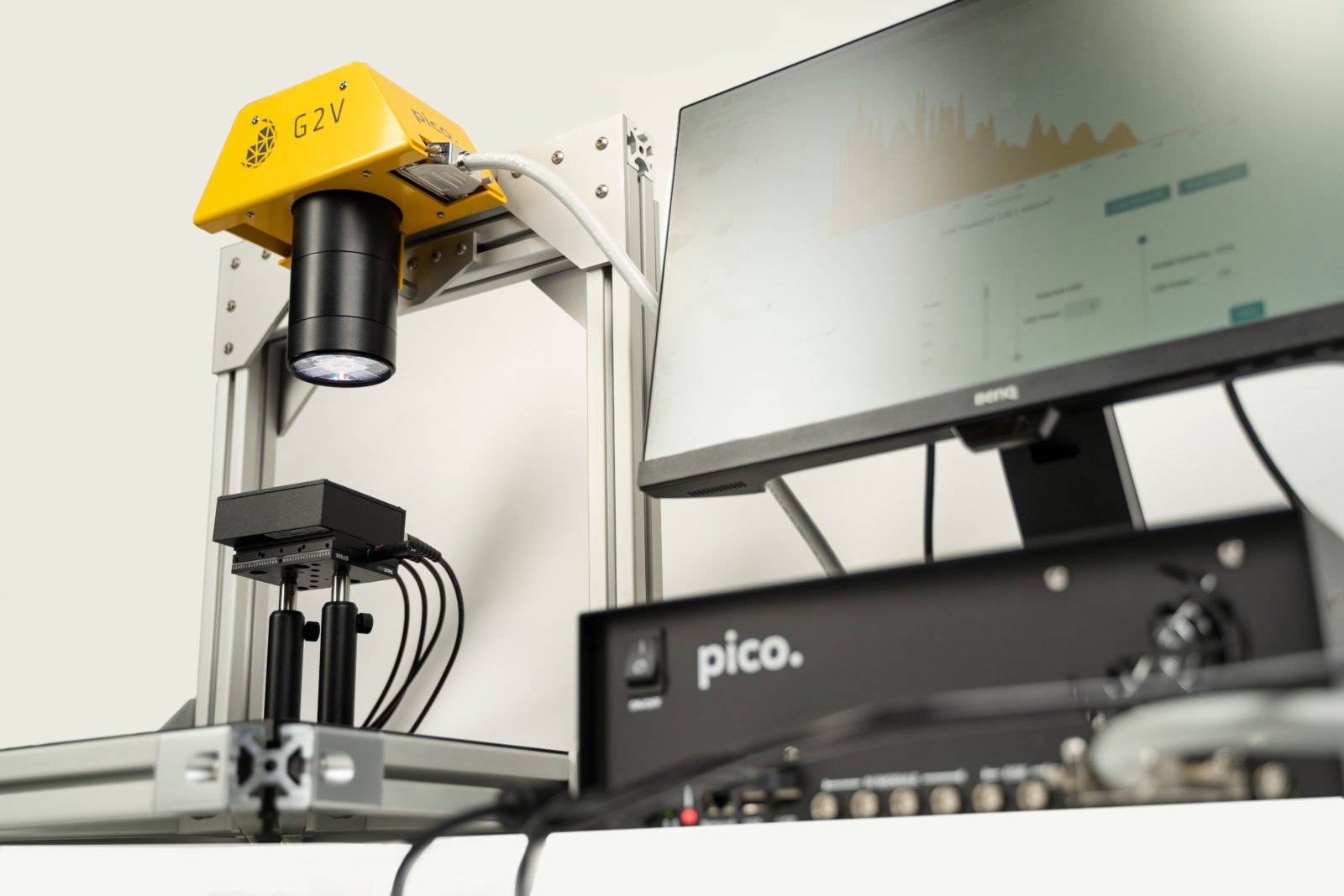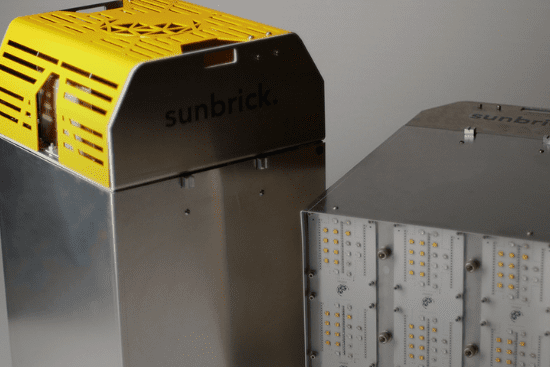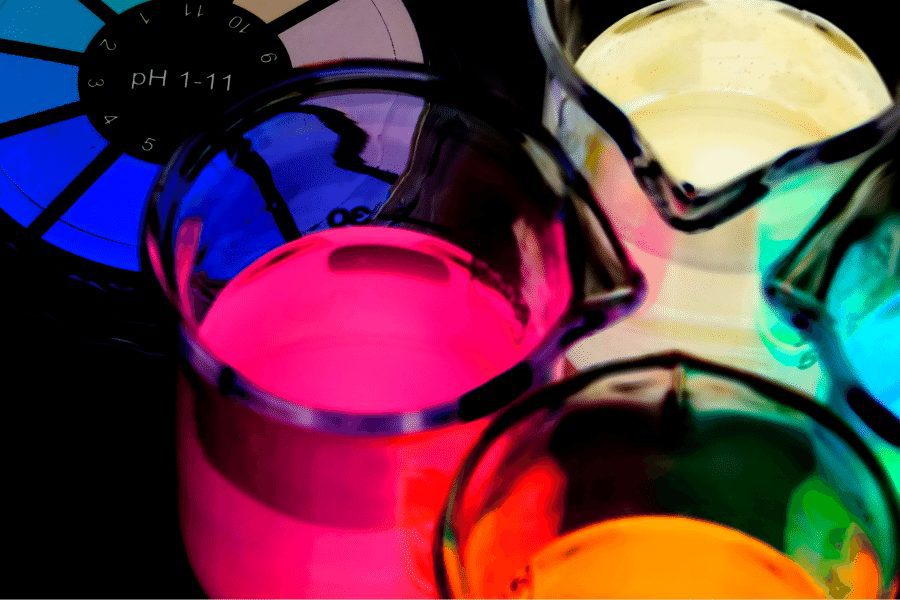





Harnessing solar energy to transform reactions
Photochemistry is at the forefront of modern research and it requires precise control over the amount of light and type directed at your experiment. Failure to control these aspects places unreliable results regarding specific products and yields. Your research matters, it may range from photodissociation to photocatalytic cells, or one of the many niche areas in between requiring the visible spectrum.
In your day-to-day life your equipment should work with you and not against you.
If you are still using traditional light sources then your equipment is working against you. The bulb lifetimes are short and they begin to dim which may not be noticeable to the human eye but it may impact your experiment’s results. In order to solve this problem you shut down your machine, change the bulb, recalibrate, and hope you can replicate the experiment again. Doing this every 1000 hours has become part of your routine and with it comes a loss of research time and issues with repeatability.
Can your research afford having downtime or unreliable results?
If not, we at G2V Optics can help.
Our Class AAA visible spectrum LED solar simulators are built from reliable technology with minimum moving parts, bulbs that last for >10,000 hours, controllable spectrum, and trusted by experts in Chemistry.
The right photons for reliable results.


You’re building the future. We’ll provide the light.
What is your existing solar simulator costing you per month?
You place a lot of faith in your visible spectrum light source to ensure your research is accurate, valid, and repeatable. But have you ever looked at your total cost to own it? After all, with most scientific instruments there are ongoing costs that affect your budget later on. This makes choosing between underlying technologies and manufacturers a challenge.
Do you pay less upfront and deal with the ongoing high costs? Or do you pay more now and save year over year?
To help you with the research we explored the total cost of ownership for a solar simulator. Here are a few things we dive into:
- Initial purchase costs
- Maintenance costs (time, money, and reliability)
- Side-by-side comparison between Xenon and LED technologies
- How to structure your own financial evaluations
Save those hidden monthly expenses by evaluating your existing solar simulator costs
Featured Innovations
High Quality Light For Your Highly Technical Applications
Remove doubt in your results due to unreliable lights. Become confident in your conclusions.

Pico™ AAA Small Area Visible Light Solar Simulator for Photochemistry
How many times have you been stuck failing to reproduce an experiment?
Or suspect instrumental variance resulted in lost time or unreliable results?
The Pico™ is designed to be as reliable and stable as the sun by removing moving parts. Spend your valuable time studying the chemistry of your reactions instead of wrangling the performance of your instrument.
Our small AAA solar simulator enables you to precisely probe photon-matter interactions with ease and confidence.
- Up to 32 tunable controls to probe specific photochemical responses
- Maximum illumination area of 2.5 cm X 2.5 cm
- 10,000 hour or a 2 year warranty
- Small lab footprint saving you space to work
- Python API (part of the optional Variable Spectra module) to automate testing
Your research is unique and so should your instruments.

Sunbrick™ AAA Large Area Visible Light Solar Simulator for Photochemistry
Eager to move up from batch to flow chemistry?
Need to illuminate a bigger reactor or run several experiments in parallel without worrying about consistent light coverage?
The SunBrick™ can assist you in your scaling efforts while providing you with accurate and reliable spectra matching. No longer do you have to choose between accuracy and scalability.
Our large-area AAA solar simulator is the instrument of choice to maximize your time
- Up to 36 tunable controls to probe specific photochemical responses
- Starting with a 20 cm X 20 cm uniform working plane for a single SunBrick™
- 10,000 hour or a 2 year warranty
- Python API and LabView DLL to automate testing
- No bulb replacement or field calibration required
Scale your testing at the speed of light with confidence.
Photoreforming microplastics in water through accurate sunlight
Problem: A chemistry research group was looking to photoreform microplastic-rich water waste into hydrogen and useful side products. They wanted to test the effect of their latest catalyst candidate on reaction behavior under standard sunlight conditions.
Innovation: The G2V Pico small-area LED simulator provided light that accurately matches the sun’s irradiance on Earth.
Outcome: The researchers were able to systematically study different aspects of their catalyst. By adjusting the intensity, they were able to calculate the overall reaction rate. By adjusting the Pico’s channel output they narrowed wavelength regions that experienced higher absorbance and that favoured the formation of certain products. Finally, using the One-Click Sun (beta) feature of the optional Variable Spectra module, they simulated the behavior that their reaction would have at higher altitudes and in places close to the equator in order to better understand real-world performance.
Photochemical Testing FAQs
Absolutely! Many published academic articles report that visible-light photocatalysis is used for hydrogen evolution and oxygen evolution. LEDs have made great strides in extending their output deeper into the UV or IR wavelengths. However, the integration of deep-UV and longer-wavelength infrared wavelengths into LED solar simulators is still ongoing as technology becomes commercially viable.
Any area that requires visible or near visible light! The area of photochemistry is diverse and growing as we look to new technologies in renewables and sustainability. The central theme to all these new approaches revolves around the need of UV-vis light, specifically light that closely matches the sun’s spectra. After all, one of your key aspects of your research requires sunlight.
Here are some of the areas of photochemistry our solar simulators excel in:
Photocatalytic microparticles, Photofragmentation, Photoluminescence, and photoelectrochemical research and applications.
Not seeing your area of expertise listed here and want to know if our solar simulators can assist you in your research?
More reproducibility: Our Pico solar simulator is designed to maintain exceptional output and stability over time. Standard lighting allows for unstable radiant flux that will affect your reaction products and yields. Many reactions also depend on the total energy flux, thus many hours of exposure may be necessary for a reaction to reach completion. Having instability over time adds extra error to your results making them harder to reproduce. Using an LED simulator gives you confidence that the results of your reactions are attributable to the chemical mechanisms and not to light variance.
High accuracy and compact design: Engineered to simulate the irradiance profile of the sun with high accuracy, the Pico is a compact solution that provides the exceptional tunability from a benchtop-sized workhorse.
Variable spectrum: Our Pico simulator may include an optional Variable Spectra module that lets you adjust its output channels so that you can probe the absorbance of your materials to different regions of the wavelength spectrum. The Variable Spectra module lets you unlock these deeper catalytic observations from your same trusted device.
High-quality LED solar simulators remove the uncertainties associated with using an unreliable light source. G2V’s class AAA LED simulators are designed to maintain exceptional output and stability, which means the irradiance flux will not vary or drift throughout your experiment. That means you’ll get stable, more consistent reaction products and yields.
Many reactions also depend on the total absorbed energy, meaning many required hours of light exposure for a reaction to reach completion. Using an LED-driven simulator gives you confidence that the results of your reactions are attributable to the chemical mechanisms and not to light variance.
As with any lab, space is a vital commodity. Large and bulky equipment takes away from being able to do your work. Coming from a research background our pico footprint can fit on a small rolling cart. It also has the advantage of being lightweight meaning if it needs to be moved to make room for other bulky equipment it can be easily done.
As with any solar simulator, an increase in reactor temperature is expected as a function of intensity and light exposure time. A benefit of LED simulators is that they do not emit excess IR radiation so unwanted heating is reduced, which means the dominant reaction driver will be electron excitation and not thermal effects. However, LED power flux still causes some sample heating. Depending on the experimental conditions, this heating may be negligible.
Book a free consultation to discuss your experimental needs.
The bandgap properties of materials determine what photons are absorbed. Excess emission peaks such as those generated by arc discharge in bulb-based solar simulators are not representative of real sunlight, and may vary between instruments. These large spectral deviations can lead to unrealistic variations in absorbance that reduce the accuracy of a chemical reaction’s results. A faithful spectral output helps ensure that similar conditions result in comparable results between different labs and instruments.
Intensity and wavelength control gives you the ability to adjust the overall irradiance flux and emission wavelength channels allowing you to isolate those regions of the spectrum best-suited for your particular chemical reaction. Flexible control allows you to continue exploring new avenues of research in the visible light spectrum without the potential of needing a new instrument.
Want to know how your catalysts would respond to Dubai’s July midday sun or London’s early winter morning? One-Click Sun (beta) replicates the solar irradiance of any place on Earth at any time of day throughout the year, giving you a more realistic prediction of reaction behaviours in their target application environments.
Knowledge Base
Our Expertise. Your Home Base.
We make sure that our customers have access to resources that help them understand more not only about the products we offer, but relevant applications and standards. Visit the knowledge base to learn more about LED illumination, Class AAA standards, example use cases and much more.
IEC 60904-9:2020 Standard for Solar Simulators
In our modern era, nearly every industry has standards that set baselines for ensuring its associated products are safe and suitable to perform intended tasks. Solar simulation – reproducing sunlight – is no different, having standards that specify the requirements for solar simulators, and...
Get Started
Chemical research is as much a science as an art. G2V provides the top choice of AAA LED solar simulators, meaning you can focus on what’s important, your research.
We ensure you don’t get bogged down in the nitty gritty of what light sources you need and how they will impact your goals. We were built by researchers to accelerate science, not hinder it. This means sometimes our competitors are a better fit and we are happy to introduce you.
Our instruments allow you to be certain your reactions are attributable to their chemical nature and not to unreliable light.
Better light. Better chemistry. Better results.
